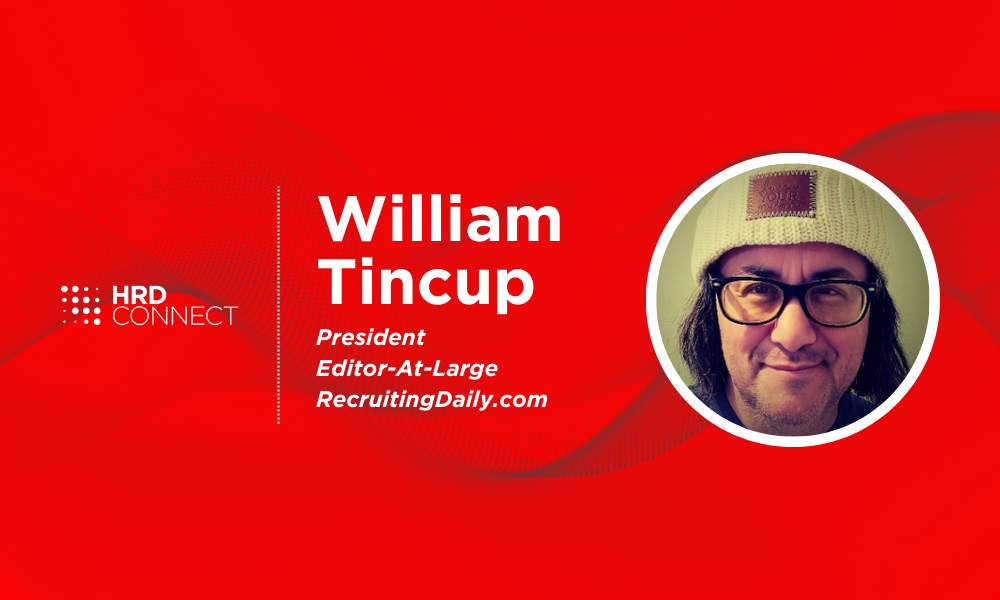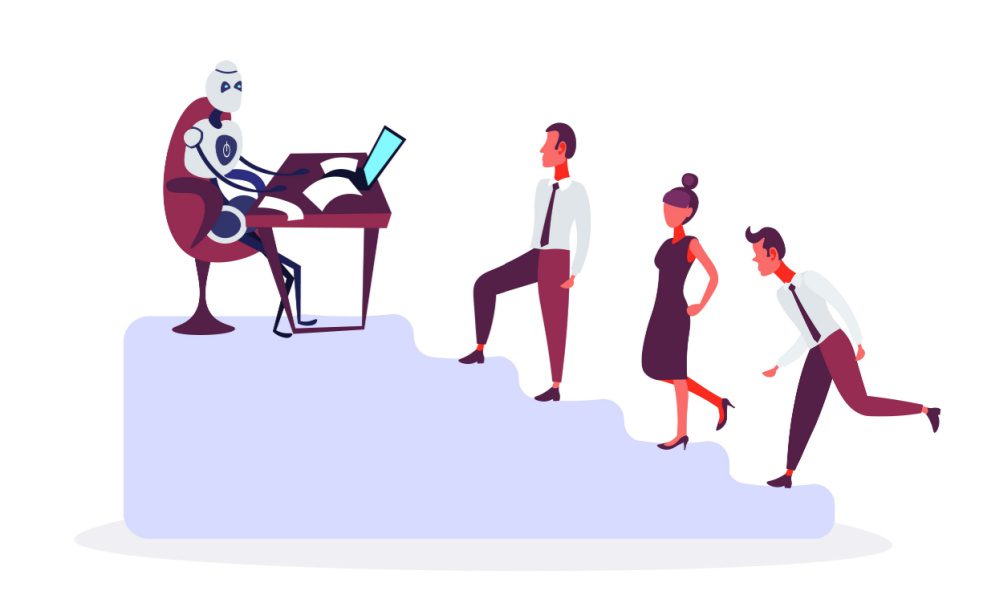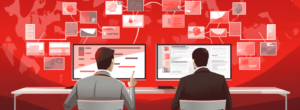Decoding HR Tech: How to ace your AI HR vendor selection process
- 7 Min Read
“One area to consider when evaluating vendors is auditing AI. What do they do to audit their AI technology? What processes do they have in place? It should be a third party, not themselves.”
- Author: Benjamin Broomfield
- Date published: Mar 23, 2023
- Categories

Revolutionary. Innovative. A ‘no-brainer’. Much has been made about the power of AI, how it will redefine HR, and shape the future of business more broadly. There are use cases across the full employee lifecycle and early adopters are already seeing measurable results. With AI expected to contribute $15.7 trillion to the global economy by 2030, the choice of AI software vendors is increasingly vast.
But, alongside opportunity, this presents an all-too-common problem for the digitization of HR. 83% of HR leaders are challenged by a lack of the right HR technology, in part thanks to the confusion around HR software vendor management. William Tincup advises on the AI vendor selection process, discusses securing buy-in, and considers where organizations should (and should not) use AI.
1) What ethical implications, e.g., biases, should HR leaders be aware of when rolling out chat AI? What responsibility does HR have to solve these?
William Tincup: Think of it as a new employee. Humans aren’t perfect. When you hire new employees, they make mistakes. Technology is the same. It’s not intelligent yet. Just like an employee, it takes time, but unlike humans, it can become intelligent a heck of a lot faster, and it has a much higher ceiling for capacity. But don’t think of it as immediately perfect.
When we think about ethical AI, one area to consider when evaluating vendors is auditing AI. What do they do to audit their AI technology? What processes do they have in place? It should be a third party, not themselves. Every company has an ombudsman, a person, a committee, or an internal group, but you also want them to have a third party. It could be a university consulting firm, a group of technologists, or a think tank. These organizations look at AI, the outcomes it generates, and how it can produce better results with less bias. It’s in the best interests of practitioners to have a third party evaluate whether AI is doing what it is supposed to.
2) What might organizations wish to consider during a vendor selection process?
William Tincup: Outside of auditing and ethical AI, consider where it has been deployed before. As a buyer of HR technology, consider: ‘Where else is this being deployed in companies like mine?’ Be self-centered. You don’t want to be a guinea pig for someone else’s technology. For example, if you’re the HR Director for a large manufacturing organization, ask the vendor how many other large manufacturing firms they work with.
Firstly, understand whether they have worked with organizations who are in your industry, vertical market, or geography. Secondly, without breaking confidentiality, understand how the organization is deploying the technology. Thirdly, if possible, see if you can talk to those similar companies to find out what the process was to deploy AI, at the leadership level and the employee level. Find out what it was like working with the vendor. So much of this is chemistry. It can be great tech, but if the chemistry is wrong, it falls flat. But remember, just because someone else had a poor experience doesn’t mean you will too. Ask them and find out what they would have done differently, and what they’ve learned.
3) How can HR leaders tie conversational AI benefits to business goals to secure (C-Suite) buy-in?
Show them how it’s already working. For years, staffing firms or internal corporate departments had scheduling coordinators who worked with hiring managers and candidates. They scheduled each meeting. Now, AI has displaced this job role. Bots can schedule meetings or interviews in a matter of seconds. So, the question is where do you redeploy such talent? Do you let them go and benefit from cost savings? Or do you redeploy someone already familiar with the company and its culture? If they’re a top performer, can you re-invest, retrain, and leverage internal mobility?
Focus the C-Suite or Board on better experiences. We all know what great customer experiences feel like. Why don’t we replicate this for our employees, candidates, and alumni? Beyond the math, pick a popular example of consumer technology. Ask them to imagine driving somewhere they’ve never been without Google Maps. Compare that with a choice of routes optimized for time or traffic. We need to make these advantages a part of our experience for all human beings, including employees and candidates.
4) What problems does conversational AI fail to solve?
AI is going to give you data. And it might even get to a point where it gives you recommendations. But again, those recommendations are based on data, not experience. It’s going to take out a lot of the low-value tasks that you’ve been doing and give you the time to focus on the human aspect of human resources. Where experience, judgment, and human nature matters.
Consider the areas where we still need human engagement, like recruiting. There’s always going to be a place for a recruiter and a hiring manager to agree on a candidate. AI may power every candidate screening or interview that leads up to that moment. But right now, humans should decide on the candidate based on what will give their team or organization the best chance of success.
It also gives you time to think about the future. AI is not going to think of the next version of what you need to do in HR. It’ll solve succession questions that you might have. But it’s not going to be thinking about your organization’s next move.
5) Should HR leaders leverage it during the recruiting, hiring, and onboarding process?
William Tincup: Absolutely. Conversational AI can help with the entire candidate and employee experience. It can offer employees quick answers to questions such as ‘what’s our vision policy?’ or ‘how many days off do I have left?’ Instead of responding to those emails or calls, HR can get time back. People constantly interact with bots nowadays, so the time is right. Too many HR professionals start their week wearing a fireman’s hat. They don’t have as much strategic time at their disposal because they’re fighting fires.
The question is, where can we deploy conversational AI? Dealing with huge data sets? Feeding recruiters or HR employees and executives? Consider where you could get your time back and redeploy resources. The more AI automates time-intensive and administrative work, the more we get our time back to focus on the valuable parts of the role.
6) What role could it play in both reviewing performance and facilitating employee development?
William Tincup: On both of those, you’ve got polar interests: The company’s interest in employee growth, and employees’ interest in their growth. Companies want to know about an employee’s skill level, what they are learning, where they want to go, and what they need to learn to get there. It becomes a conversation around internal mobility. Conversational AI is a non-stop, relentless passenger to help you understand the employee better.
On the other side, employees can learn things about themselves. Deploy AI as a passenger. As somebody for an employee to talk to as a colleague. It could be “I’m struggling with learning Python; is there another language I could learn to help me?” Employees can use it as a platform to improve and ask questions about their career paths and the projects they could take on. You can’t see it as being deployed in a company-centric, or employee-centric way. So, think of it as a passenger that travels alongside each individual.
7) How could HR leaders use AI to scale their data processing capabilities?
William Tincup: As human beings, we can only consume so much data in each second, minute, hour, or day. An algorithm doesn’t have that constraint. Let’s consider a real-world example. Say you’re running payroll through 13 different systems globally. You must pay everyone correctly. An algorithm can go through all that data, spot errors or inconsistencies, and flag these to a human. AI will make you better. It’s what it’s built for.









